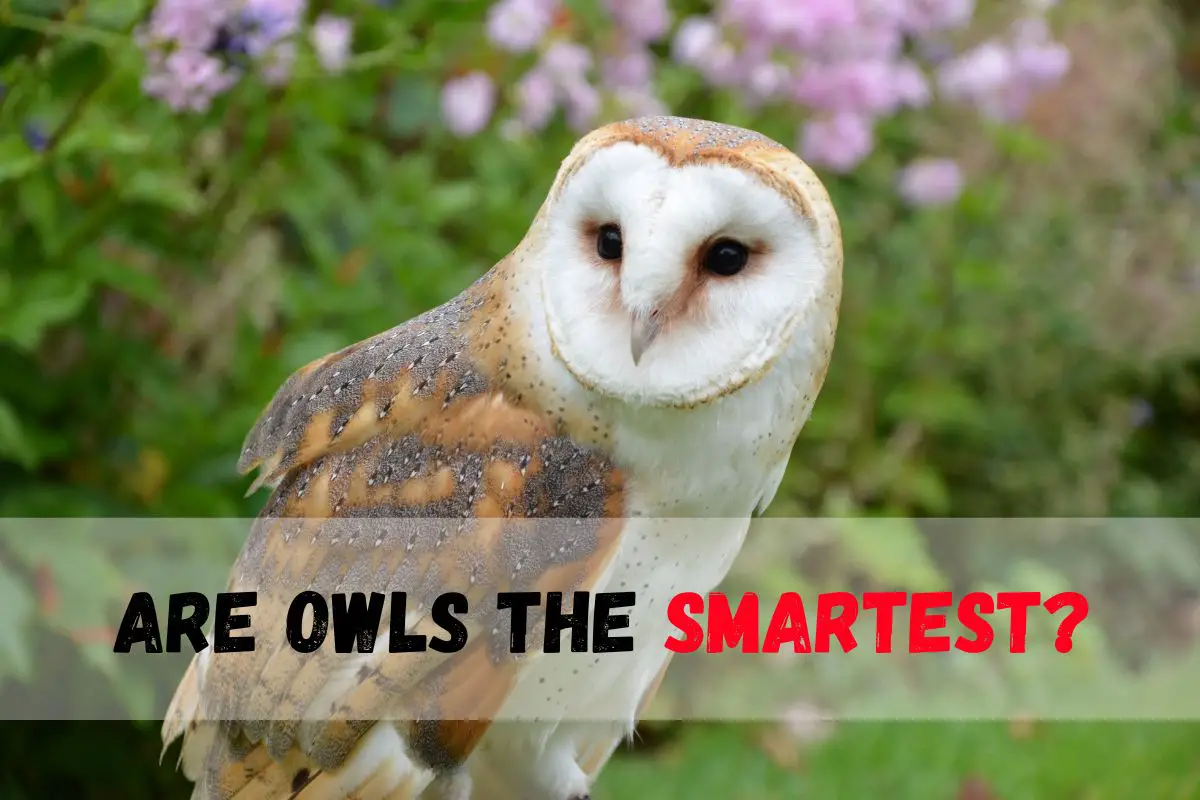Are Owls the Smartest?
In the realm of Greek mythology, the owl has held a special place, often associated with wisdom and the guidance of Greek gods. The depictions of owls in ancient Greek paintings further highlighted their significance, symbolizing the deep connection between these nocturnal creatures and human perception of knowledge. The owl’s behavior has captivated scientists in the field of animal behavior science, particularly as they are renowned as the ultimate night owl, exhibiting remarkable adaptations for life in the dark.
Owls, as creatures, are renowned hunters, and their prowess lies in their exceptional hearing and camouflage plumage. Their tubular eyes, a marvel of visual evolution, enable them to lock onto their prey with precision. This unique combination of visual and hearing abilities sets them apart not only within the bird family but in the broader spectrum of the animal kingdom.
The question of whether owls are the smartest bird species is a matter of ongoing debate in the world of avian intelligence. Their intelligence is not merely measured by their ability to execute a task, but also by their aptitude for conflict resolution. Owls, often found in the company of forest animals and birds of prey, exhibit an impressive capacity for sight and the ability to process information efficiently. These attributes are indicative of their impressive comprehension and problem-solving skills.

Study Evidence
The study presents intriguing insights into the cognitive abilities of great grey owls compared to other large-brained birds such as crows and parrots. The research indicates that these owls might be comparatively less adept at conflict resolution, as evidenced by their struggle in a basic cognitive test involving pulling a rope to obtain a treat, a task efficiently completed by various other bird species.
In a particular experiment, a portion of the owls attempted the task, showcasing their natural actions without prior animal training. However, their approaches varied, with a few owls trying unconventional methods to pull the threads.
This behavior in owls, as observed in the study, leads some to believe that their lower performance in cognitive tasks may be linked to their limited knowledge of the fundamental physics of objects, setting them apart from birds like crows and parrots who excel in such tests.

The Barn Owl’s Brilliant Brains
The Barn Owl, a remarkable species, stands out as one of the oldest and most fascinating owls in the avian world. Their extraordinary characteristics and abilities make them a subject of intrigue for bird enthusiasts and researchers alike
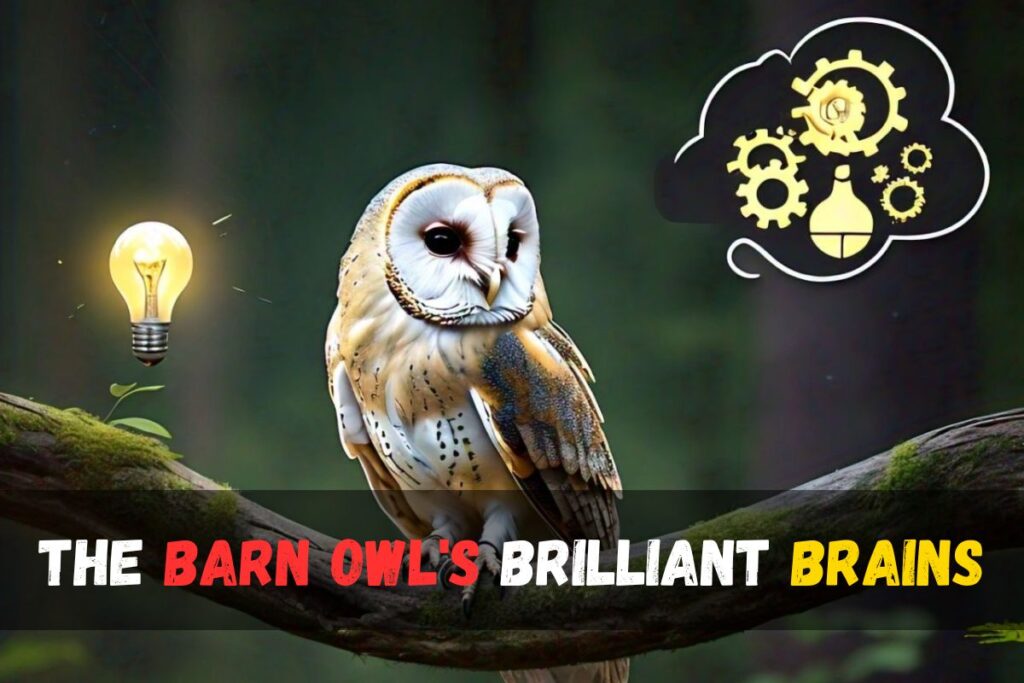
- Oldest Owl Species: The Barn Owl is one of the oldest owl species on the planet. It has a lineage dating back millions of years, showcasing the remarkable resilience and adaptability of these birds. Despite evolving in a constantly changing world, Barn Owls have managed to thrive through the ages, demonstrating their ability to overcome environmental challenges.
- Highly Adaptable: Barn Owls are highly adaptable birds, capable of inhabiting a wide range of environments, from woodlands and grasslands to farmlands and urban areas. Their adaptability is a testament to their incredible survival skills, as they can adjust their hunting and nesting habits to suit their surroundings.
- Skilled Hunters: One of the most impressive aspects of Barn Owls is their hunting prowess. These birds are expert nocturnal hunters, equipped with exceptional vision and keen hearing. Their heart-shaped facial disc, which acts like a radar dish, allows them to detect the slightest sounds of their prey, even in complete darkness. With silent flight and swift, stealthy movements, they are formidable hunters, preying on a variety of small mammals like voles, rats, and mice.
- Planned Forceful Strikes: Barn Owls are not just skilled hunters; they also employ a unique hunting strategy. They plan their attacks with precision, using their extraordinary auditory and visual senses to locate their prey. When they strike, it is with remarkable force and accuracy that, ensure a successful capture. This combination of sensory acumen and tactical hunting makes them efficient and deadly predators.
- Unique Vocalizations: Another fascinating aspect of the Barn Owl is their distinctive vocalizations. Unlike the haunting hoots of other owl species, Barn Owls produce eerie, raspy screeches and hisses. These vocalizations serve various purposes, from mating calls to territory marking. Their unusual calls add to the enigmatic charm of these birds and make them easily distinguishable from their nocturnal counterparts.
Comparison With Other Birds
Comparing owls with other birds in terms of intelligence and cognitive abilities is a subject of great interest
Crows & Corvids
When comparing owls with crows in terms of intelligence and smartness, it’s evident that both bird species exhibit distinct approaches to cognitive abilities and problem-solving.
Owls are unique in their own right as they primarily function at night, relying on their acute senses to navigate and hunt. They may not demonstrate the same level of cognitive capacity as corvids, such as crows and ravens. Owls are more specialized in their hunting techniques and, rather than displaying elaborate problem-solving skills, they utilize their keen senses to locate prey efficiently.
On the other hand, corvids, which include crows and ravens, stand out as particularly intelligent birds. They have been observed using techniques, manipulation, and recollection, showcasing a higher level of cognitive capacity. In some cases, corvids even exhibit teamwork, suggesting a level of cooperation and social intelligence.
Furthermore, ravens, a type of corvid, go a step further by using tools for specific missions, like storing food for future use. Their fantastic memory enables them to recall individuals who pose a threat. This implies a high level of problem-solving ability and intelligence among ravens, and by extension, crows.
Parrots
Parrots and owls exhibit different levels of intelligence and cognitive abilities.
They are known for their remarkable ability to communicate verbally, as they can memorize and speak a few hundred words. They also display problem-solving skills, using tools to shred their older plumage. In their communities in the Amazon jungle, parrots work as a team, and when trained, they can identify objects and seek assistance from humans. Their brains, especially the nidopallium caudolateral, are well-developed and comparable to the prefrontal cortex in mammals, which is associated with higher cognitive capabilities.
On the other hand, owls have limited vocalization skills, and their communication abilities are not as developed as those of parrots. Their brains are not as large or well-developed in proportion to their size. When assessed in confinement, owls have not exhibited above-average intellect, in contrast to parrots.
Eagles
When comparing owls with eagles in terms of intelligence and smartness, it’s important to consider several factors. Both eagles and owls share some similarities, such as being solitary raptors with superb vision and hunting ability. However, when it comes to intelligence, there is a notable difference.
Eagles are often regarded as one of the sharpest birds of prey. They exhibit keen decision-making skills, impressive problem-solving abilities, and adaptability in various hunting situations. This sharpness in their cognitive abilities is attributed to their hunting prowess.
On the other hand, owls, while they excel in their own right as hunters, tend to fall on the lower end of the spectrum when it comes to intelligence. They may not demonstrate the same level of strategic thinking and decision-making as eagles. Owls rely more on their exceptional sensory capabilities, especially their remarkable night vision and acute hearing, to locate prey.
Do owls attack humans?
Why are owls considered intelligent or wise?
Owls are often considered intelligent and wise in many cultures and mythologies for several reasons:
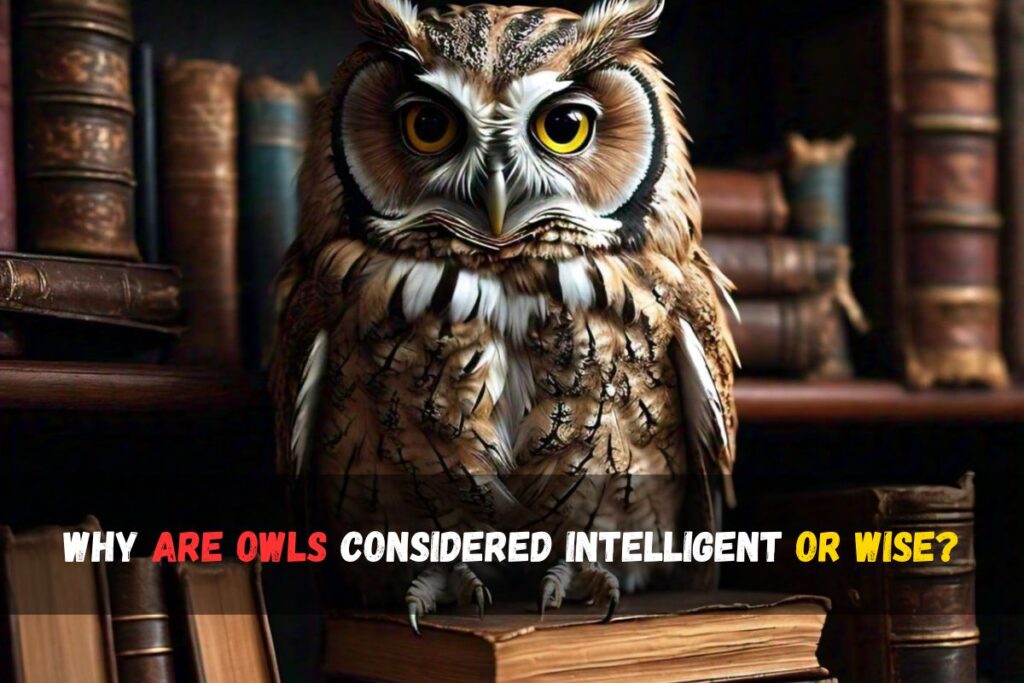
1. Nocturnal Behavior:
Owls are primarily nocturnal birds, which means they are active during the night. In many societies, wisdom, and intelligence are associated with the ability to navigate and thrive in the darkness or the unknown, which adds to their mystique.
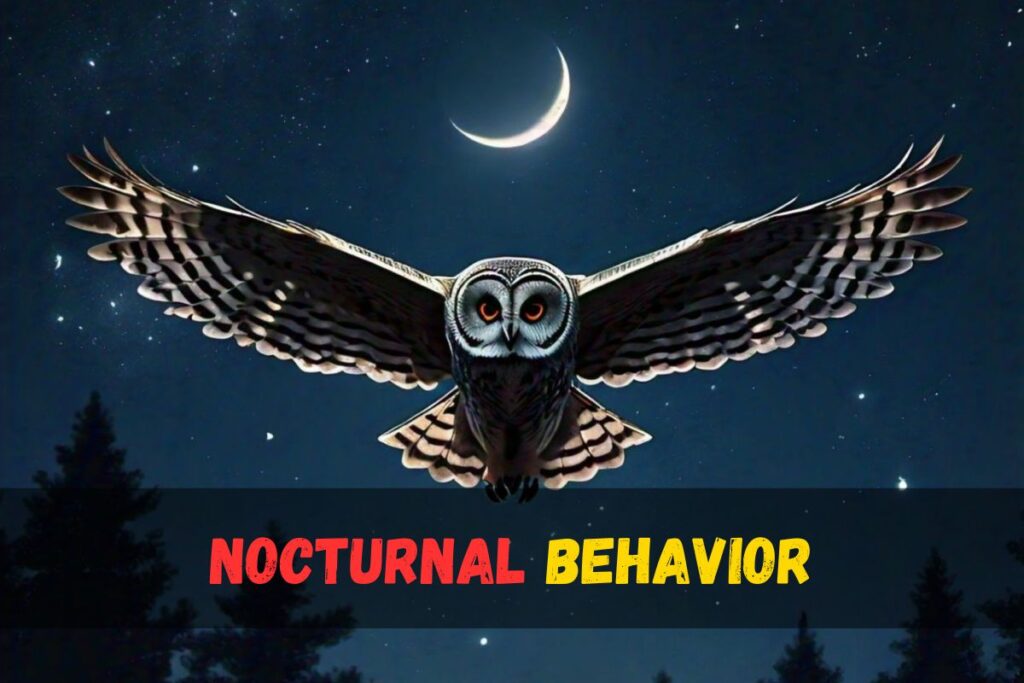
2. Large Eyes:
Owls have large, forward-facing eyes that give them excellent night vision. Their ability to see in low light conditions is a symbol of seeing beyond the surface and perceiving hidden truths, which is often associated with wisdom.
3. Silent Flight:
Owls possess a unique adaptation that allows them to fly silently. This is due to the structure of their feathers and wing shape, which reduces noise. In various cultures, this silent flight is seen as a symbol of the ability to move stealthily and discreetly, akin to the wisdom of discernment.
4. Stoic Appearance:
Owls often have a serious and stoic appearance, which can be interpreted as a sign of wisdom. Their calm and unflappable demeanor is a reminder of the importance of patience and contemplation in making wise decisions.
5. Mythological and Cultural Significance:
Throughout history, owls have appeared in the folklore and mythology of different cultures. They are often associated with wisdom, foresight, and the supernatural. For example, the ancient Greeks believed that the goddess Athena, the goddess of wisdom, had an owl as her symbol.
6. Association with Books and Learning:
In some cultures, owls are associated with books and learning, which are often linked to intelligence and wisdom. This association is sometimes used in educational contexts.
7. Adaptations and Survival Skills:
Owls have evolved various adaptations that allow them to be successful predators. These adaptations, such as keen hearing and the ability to rotate their heads nearly 270 degrees, are seen as signs of intelligence and resourcefulness.
It’s important to note that the perception of owls as symbols of wisdom varies across different cultures and traditions. The owl’s symbolism is not universal, and interpretations can differ based on regional beliefs and myths. Nonetheless, the characteristics and behaviors of owls have contributed to their reputation as intelligent and wise creatures.
Do owls have a good memory?
Owls are known for their relatively good memory. While research on their memory capabilities is ongoing, various studies suggest that owls possess impressive remembrance skills, especially related to their hunting and survival techniques.
One area where their memory is particularly notable is spatial memory. Owls are skilled hunters and often rely on their ability to remember specific locations, such as favorite hunting grounds, the position of prey, and even particular perches or nests. Their memory of spatial details within their environment aids in efficient hunting and navigation.

Additionally, research has indicated that some owl species, like the Eurasian jay, exhibit remarkable memory in tasks related to food caching and retrieval. While not an owl, the Eurasian jay, a corvid bird, is known for its caching behavior, which involves hiding food and retrieving it later. This behavior is believed to involve the use of spatial memory to remember the locations of numerous hidden food caches.
Furthermore, owls have been observed to remember individuals, both within their species and potentially other creatures in their environment. This social memory is beneficial for recognizing mates, competitors, or potential threats.
Are owls symbols of death?
Owls have a complex and varied symbolism, and their association with death is not universal but exists in certain cultures and beliefs. In some societies, owls have been linked to death or considered omens of impending misfortune, often due to their nocturnal nature and their ability to move silently through the darkness.
This association is found in several folklore traditions. For example, in certain Native American cultures, owls are sometimes associated with death or considered as messengers from the spirit world. The Hopi tribe, in particular, sees the Burrowing Owl as a guardian of the afterlife.
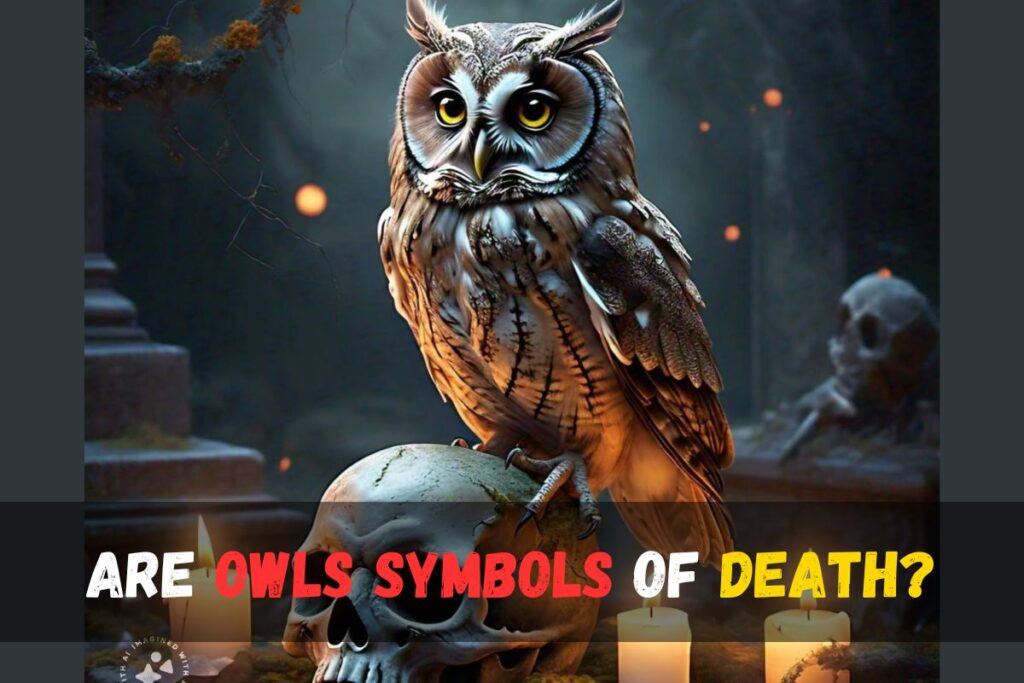
In ancient Roman and Celtic cultures, owls were also linked to the supernatural and were sometimes seen as harbingers of death or impending doom. In some European folklore, the owl’s call was considered a bad omen or a sign of an impending death in the family.
However, it’s important to note that not all cultures view owls in this manner. In many other societies, owls are associated with wisdom, intelligence, and protection.
Wise owls in folklore and mythology
Wise owls have played a significant role in folklore and mythology, particularly among the Ancient Greeks. The unique form and intelligent behaviors of owls captured the imagination of the Ancient Greeks, who believed these birds were more than just creatures. Owls were closely associated with the Greek goddess Athena, who is the goddess of wisdom, and her Roman counterpart, Minerva. The precise reason behind this association remains mysterious, but it may have its origins in Old Europe, dating back to the Neolithic and Bronze Eras.
It is possible that owls were abundant in Greece during that time and were believed to inhabit temples. The Ancient Greeks even thought that these owls possessed a special ability to see an “inner light” that enabled them to keep watch at night. As a result, any owls inhabiting the Acropolis in Athens were not only protected but also revered for their perceived wisdom and the connection to the goddess of wisdom herself, Athena. This strong association between owls and wisdom in Greek mythology has contributed to the enduring image of owls as wise creatures in various cultures and folklore around the world.
What is the most intelligent owl species?
To determine the most intelligent owl species, we need to consider that owls are highly specialized and talented in their own right. Each adapted to their specific niches and habitats. However, it’s challenging to definitively measure their intelligence.
Intelligence in the animal kingdom is a complex concept that can manifest in various ways, and it’s not always easy to compare species directly. The level of intelligence in owls may vary based on their specific adaptations and the demands of their environments.
Some owl species, like the Snowy owl, are known for their ability to thrive in Arctic conditions, showcasing their impressive adaptations. On the other hand, the Burrowing owl has adapted to desert habitats. These adaptations are forms of intelligence in themselves.
While it’s difficult to pinpoint a single “most intelligent” owl species, we can appreciate the diverse ways in which these birds have evolved and specialized to survive in their respective environments. Intelligence in owls should be understood in the context of their unique niches and adaptations, rather than trying to rank them based on a single universal standard of intelligence.
Owls in Christian folklore
In Christian folklore, owls have been associated with various symbolic meanings, both positive and negative, over the centuries. Here are a few of the key interpretations of owls in Christian tradition:
- Symbol of Darkness and Ignorance: In some Christian traditions, owls were seen as symbols of darkness and ignorance. Their nocturnal nature, hidden habitats, and eerie hoots led to the belief that owls represented spiritual blindness and the forces of evil. Owls were sometimes linked with demonic or witchcraft imagery.
- Messenger of Doom: In certain medieval Christian art and literature, owls were depicted as harbingers of death and doom. Their presence was believed to foretell impending misfortune or the death of a loved one. This perception contributed to a negative view of owls in some Christian contexts.
- Symbol of Solitude and Contemplation: On a more positive note, owls were also seen as symbols of solitude and contemplation in Christian mysticism. Their ability to dwell in seclusion and their quiet demeanor were associated with the virtues of reflection, prayer, and seeking spiritual enlightenment. In this context, the owl’s solitary nature was seen as a metaphor for the Christian hermit or monk.
- Resurrection Symbol: In some Christian interpretations, the owl was viewed as a symbol of resurrection. This interpretation was based on the belief that the owl, being a nocturnal bird, could represent the resurrection of Christ, who emerged from the “darkness” of the tomb into the light of a new day.
It’s important to note that the perception of owls in Christian folklore varied across different regions and periods. While some Christians associated owls with negative symbolism, others found positive or neutral meanings in these birds. The owl’s symbolic significance in Christianity was influenced by local customs, cultural beliefs, and the interpretations of individual theologians and religious figures.
Owls in Native American folklore
Owls hold diverse and complex symbolism in Native American folklore, as their significance varies among different tribes and regions. Here are a few examples of how owls are viewed in Native American cultures:
- Hopi Tribe: In Hopi mythology, the Burrowing Owl is associated with the god of the dead, representing the spirits of the deceased. These owls are believed to protect the Hopi people by warning them of approaching danger and serving as messengers between the living and the spirit world.
- Hopi and Pueblo Tribes: Among the Hopi and Pueblo tribes, the Flute Player, a significant deity in their culture, is often depicted with owl feathers in his headdress. This symbolizes the owl’s connection to music, spirituality, and wisdom.
- Hopi and Zuni Tribes: The Hopi and Zuni people revere the Barn Owl, which they view as a messenger of the rain priests. Barn Owls are associated with fertility and are believed to bring the blessings of rain and successful crops.
- Apache Tribe: In Apache tradition, the Burrowing Owl is considered a protector of Apache warriors. The Burrowing Owl’s alert behavior is seen as a guardian spirit guiding the warriors on their missions.
- Navajo Tribe: The Navajo people have varying beliefs about owls. While some view owls as harbingers of death and evil spirits, others see them as protectors and guardians of the home, keeping away negative influences.
- Pueblo Tribes: Some Pueblo tribes associate owls with purification and protection. Owls are believed to cleanse homes and spaces of negative energies, making them sacred and wise creatures.
Owls in Indian folklore
In Indian folklore, owls hold a multifaceted significance. On one hand, they are generally considered symbols of foolishness or even bad luck. This belief is rooted in the idea that owls serve as the spiritual vehicle of Lakshmi, the goddess of wealth. During the festivals of Dussehra and Diwali, thousands of owls are sacrificed. The motive behind these sacrifices is rather intriguing; it is believed that by killing owls. They prevent Lakshmi from taking away the wealth she bestows upon a home. This leaves the accumulated wealth behind, bringing good luck to the household. Therefore, in this context, killing owls is thought to be a means of accumulating more good luck.
Wise Owls in Literature
In literature, owls have been portrayed in various ways, and their wisdom or intelligence has been a recurring theme. The concept of owls as wise creatures can be traced back to ancient times. For instance, the Greek writer Aesop, in his famous collection of tales known as Aesop’s Fables, described owls as wise birds. In the fable “The Owl and the Birds,” it states, “The Owl is indeed a bird of great wisdom.”
Ancient Greek folklore and Aesop’s writings have contributed to the perception of owls as intelligent beings in much of Europe and Western literature. However, it’s important to note that this perception wasn’t always straightforward. Before the 16th and 17th centuries, owls were often seen as harbingers of death and misfortune, as seen in the works of Shakespeare and other writers who referred to owls as omens of doom.
Shakespeare, for example, made few, if any, positive references to owls and instead associated them with bad omens. In “Julius Caesar,” he portrayed the daytime hooting of an owl as an omen of Caesar’s impending murder. Similarly, the Barn owl was considered a dark omen by William Wordsworth.
Despite these negative associations, literature also features wise and kind-hearted owls. For instance, Merlin’s pet owl, Archimedes, in “The Sword In The Stone,” is depicted as intelligent though chaotic. In the world of Winnie the Pooh, the owl is considered the wise figure of the forest.
Owls have also been portrayed as emotive and romantic, as seen in the poem “The Owl and the Pussycat.” On the other hand, some owl characters, like Owl Brown in “The Tail Of Squirrel Nutkin,” have exhibited violent tendencies.
In works like “The Silver Chair” by C.S. Lewis, characters like Glimfeather are portrayed as kind-hearted and wise owls. The children’s book “The Owl Who Was Afraid of the Dark” by Jill Tomlinson introduces Plop, a kind and warmhearted owl.
One of the most famous literary owls is Hedwig, the pet owl of Harry Potter in J.K. Rowling’s series. Hedwig, a beautiful Snowy owl, serves as a loyal companion, delivering mail to and from Potter during his adventures at Hogwarts.
In literature, owls take on a wide range of roles, from symbols of wisdom and intelligence to complex characters with various traits and qualities. Their depiction often reflects the cultural and historical context of the stories in which they appear.
FAQ’S
Why are owls considered bad luck?
The belief that owls are associated with bad luck is rooted in various cultural superstitions. Owls’ nocturnal behavior, eerie nighttime hooting, and associations with death and illness in some cultures have contributed to their reputation as harbingers of negativity. Additionally, their ties to the supernatural and myths portraying them as companions to witches or sorcerers have furthered their association with darkness and ill fortune.
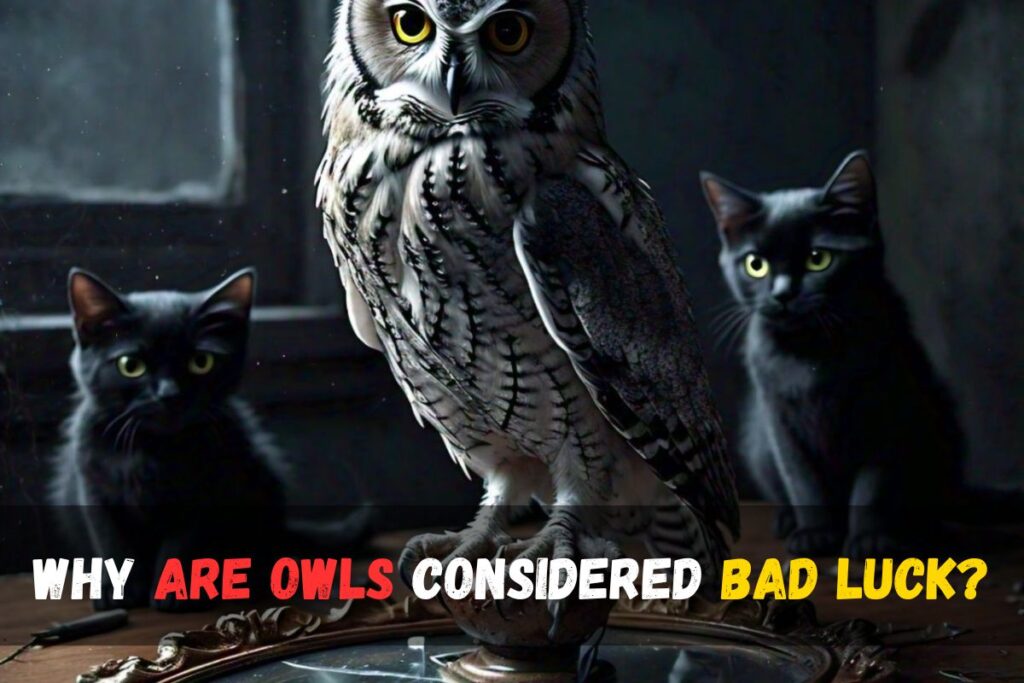
Are owls smarter than hawks?
When comparing the intelligence of owls and hawks, it’s important to consider that owls and hawks possess different sets of cognitive abilities. Owls are often associated with wisdom due to their large eyes, which are adapted for night vision and hunting. They have a complex brain that is primarily dedicated to processing information from their optic nerves. However, this specialization doesn’t necessarily translate to what we commonly think of as “smart” in the way humans or some other animals are.
Are Owls Friendly?
Owls are not typically considered friendly in the way domesticated animals are. They are wild creatures with instincts. In some cases, captive owls can tolerate human presence, but they are not pets in the traditional sense. Interactions with owls, whether in the wild or captivity, should be handled with caution and respect for their unique nature.

Are owls smarter than pigeons?
Owls are generally considered to be more intelligent than pigeons. Owls are known for their problem-solving abilities, keen hunting skills, and adaptability to various environments. They have excellent sensory perception and exhibit complex behaviors in the wild. Pigeons, on the other hand, are often seen as less intelligent birds with simpler behaviors. While both species have their unique attributes and roles in the ecosystem, in terms of cognitive abilities and problem-solving, owls are typically regarded as more intelligent.

